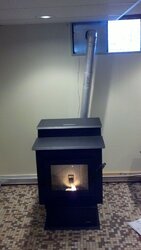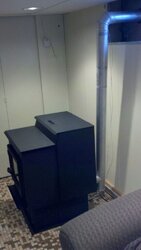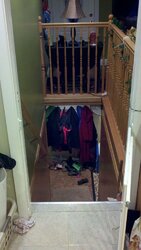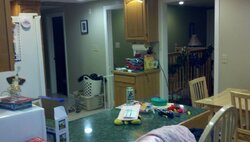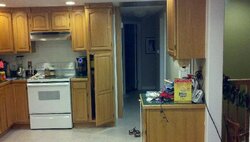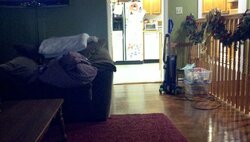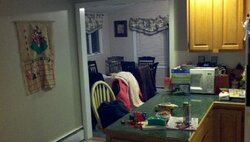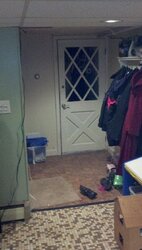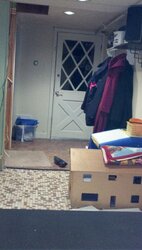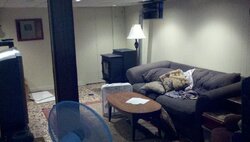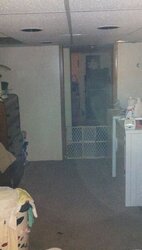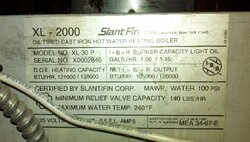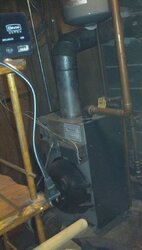Hi Everyone,
Im new to this site and new to the world of pellet stoves. I just had a Heatilator PS50 installed on Friday 12/9/11. Looks great, nice flame like a stove but im not sure if im running it right or what i can do to make it better. First, i have tried 3 different pellets... New england, Instant heat and LG. I have the stove downstairs in my semifinished basement and when you are down there it is piping hot, but to get it to be warm upstairs i need to set everything on max and that is only with 30 degree nights. If it is only keeping up now im in trouble on single digit nights.
What i have done
Installed a vent almost above it which is in the livving room
Installed a vent about 6-7 feet to the right of it which is in the kitchen
Installed a vent about 20 feet away which is in the hallway
Placed a fan about 12-13 feet away to blow on the right side of the fan to start a circulation effect.
In the daytime its good, im at 69 degrees right now with it on Med and the thermo is set at 90, but 69 upstairs
I opened the fuel adjustment rod to pretty much all the way as the flame was only about 2 inches tall. Noticed this gives a little more heat out of the blower but not to much for all around warmth in the house.
My house is 1364 CuFt upstairs and 600 downstairs. I have an open stairway to the downstairs so i dont need to worry about a door or hallway to the downstairs. All in all i thought i would have to keep the stove turnd down so as not to be cooked out of the house but im at the complete other spectrum. I have the oil heat we used completely off since it was installed on Friday so i know the stove is doing a good job on the house. I just would like it to be a bit better.
Can anyone give me pointers or help on if im messing something up or what else i can do. Im a complete newb to this and i know it will take trial and error.
All it seems at night when i leave the stove alone and just make sure its full the temp drops 7 degrees or so and getting up in the morning is not pleasant.
I dont know if i missed anything such as a damper ( dont even know if this has one) or anything else, bur please ask me and ill see if i can get the answer. Any help would be greatly appreciated
Here it is installed
PS: just for more info i am currently at 2 or so bags a day and have just burnt the first 2 bags of LG's
Thanks Jeff
Im new to this site and new to the world of pellet stoves. I just had a Heatilator PS50 installed on Friday 12/9/11. Looks great, nice flame like a stove but im not sure if im running it right or what i can do to make it better. First, i have tried 3 different pellets... New england, Instant heat and LG. I have the stove downstairs in my semifinished basement and when you are down there it is piping hot, but to get it to be warm upstairs i need to set everything on max and that is only with 30 degree nights. If it is only keeping up now im in trouble on single digit nights.
What i have done
Installed a vent almost above it which is in the livving room
Installed a vent about 6-7 feet to the right of it which is in the kitchen
Installed a vent about 20 feet away which is in the hallway
Placed a fan about 12-13 feet away to blow on the right side of the fan to start a circulation effect.
In the daytime its good, im at 69 degrees right now with it on Med and the thermo is set at 90, but 69 upstairs
I opened the fuel adjustment rod to pretty much all the way as the flame was only about 2 inches tall. Noticed this gives a little more heat out of the blower but not to much for all around warmth in the house.
My house is 1364 CuFt upstairs and 600 downstairs. I have an open stairway to the downstairs so i dont need to worry about a door or hallway to the downstairs. All in all i thought i would have to keep the stove turnd down so as not to be cooked out of the house but im at the complete other spectrum. I have the oil heat we used completely off since it was installed on Friday so i know the stove is doing a good job on the house. I just would like it to be a bit better.
Can anyone give me pointers or help on if im messing something up or what else i can do. Im a complete newb to this and i know it will take trial and error.
All it seems at night when i leave the stove alone and just make sure its full the temp drops 7 degrees or so and getting up in the morning is not pleasant.
I dont know if i missed anything such as a damper ( dont even know if this has one) or anything else, bur please ask me and ill see if i can get the answer. Any help would be greatly appreciated
Here it is installed
PS: just for more info i am currently at 2 or so bags a day and have just burnt the first 2 bags of LG's
Thanks Jeff


